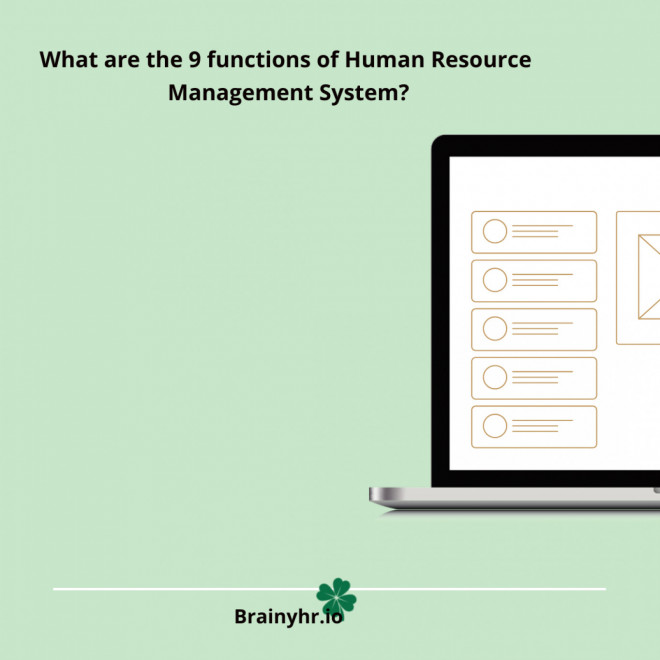With automated systems in business, its results and efficiency are significantly increased. Technologies help simplify and optimize many business processes, including HR processes.
HR departments are an important part of any business. HR departments act as a bridge between employers and employees, helping to ensure that both parties do their work efficiently.
HR managers help maintain the structural and organizational integrity of the workplace.
HRIS helps HR departments to perform their work better, faster, and more efficiently.
Limited-Function HRIS
Limited-Function HRIS - one of the types of HRIS.
Unlike complex HRIS, the limited-functionality HRIS function performs only one function.
Such systems are not necessarily designed for strategic planning or management. Instead, their functions are more specific and precise.
For example, HRIS can be created specifically for training employees or managing benefits.
HRIS systems with limited functionality are generally better suited for smaller companies because they are often inexpensive, easy to use, and can be used by even one HR manager.
Complex HRIS functions
But most companies use complex HRIS. Because they allow you to focus on all processes in the HR department and automate many processes. This comprehensive system is also our HRIS Brainy HR, which allows solving problems from payroll calculation to training and personnel management.
- Performance management. Performance management is a key part of managing people. Performance ratings are generated once or multiple times a year by the direct manager.
- Applicant Tracking System (ATS). This software handles all the company’s recruiting needs. It tracks candidate information and resumes, enables recruiters to match job openings to suitable candidates from the company’s application pool, and helps in guiding the hiring process.
- Benefits administration. Another functionality of the HRIS is benefits management. Employee benefits are an important aspect of compensation and are also managed in this system. More advanced systems offer an employee self-service model for employee benefits. In this case, employees can select the benefits they are looking for themselves. One may want more paternity leave, the other one a more expensive company car.
- Payroll. Payroll automates the pay process of employees. Contractual data and information on new hires are often entered into this system – sometimes combined with time & attendance data – and at the end of the month, payment orders are created.
- Succession planning. Creating a talent pipeline and having replacements available for key roles in the organization is another key component of an HRIS.
- Time & Attendance. This module gathers time and attendance data from employees. These are especially relevant for shift workers where employees clock in and out. Back in the day, employees often wrote down their working hours on a piece of paper. Then, the manager would manually enter the data into a time tracking system. Based on this data, payment orders were generated and paid to all employees. Nowadays, workers often check into work by fingerprint or a card that is synced with an HRIS. This gives an exact time for arrival and departure. Any issues with lateness are easily detected.
- Training. This module allows HR to track the qualifications, certification, and skills of the employees, as well as an outline of available courses for company employees. This module is often referred to as an LMS, or Learning Management System when it’s a stand-alone. An LMS usually includes available e-learning and other courses to be followed by employees.
- Reporting & Analytics. Modern systems enable the creation of automated HR reports on various topics like employee turnover, absence, performance, and more. Analytics involves the analysis of these insights for better-informed decision-making.
- Employee self-service. Employee self-service has already been mentioned. Organizations are focusing increasingly on having employees and their direct supervisors manage their own data. Requests like holidays can be asked for by the employee him/herself. After approval, these are then immediately saved into the system (and registered to track for payroll and benefits purposes).
HRIS, HRMS, HCM. What is the difference between those types of systems?
HRIS
Such software is designed to manage people, policies, and procedures and is focused on personnel tracking (tracks employee working time) and recruiting (workflows monitoring to help organizations optimize their processes.) It is a data-driven system that provides valuable data and insights for any business. Software features can vary widely depending on what kinds of companies are being targeted. With that caveat, here’s an overview of HRIS software functions.
HCM
A human capital management system refers to much broader suites and includes practices and policies an organization uses to manage its workforce. It compiles different tools to monitor the entire employee life cycle, from developing talent pipelines for future recruitment to offboarding and pensions. Such systems can also handle HR admin and give employees access to their data and tools to, for example, request vacation. HCM software includes every HRIS feature under its umbrella and covers talent management and global capabilities.
It also collects different features and tools such as productivity analytics, payroll documents, and timesheets — making it easier for companies to organize and track everything employee-related.
HRMS
Human Resource Management Systems typically offers all the features of an HRIS and functions of an HCM. Moreover, far from all HRMS providers have a progressive Talent Management component included in their suite. When investing in an HRMS, you can access everything included in an HRIS and HCM, plus a payroll system and some more efficient labor management tools.
Summary
Automated personnel management systems allow businesses to automate processes in the HR department. This allows HR specialists to perform their work better, and employees to gain a positive experience from cooperation with the company. There are different types of software. How to choose the right system type for you? First, you need to set your goals and understand what problems you want to solve with the automated HR system. Then you need to contact several providers that you liked and consult with them. If you like our HRIS Brainy HR we will be happy to communicate with you. Leave your contacts and a specialist from the support service will contact you.
Technologies are the future. Use technologies to achieve your success.


 Posted on Aug 10, 2022 by Lillia
Posted on Aug 10, 2022 by Lillia


